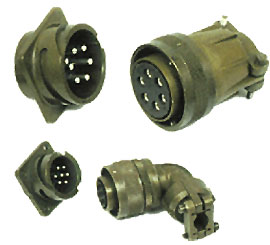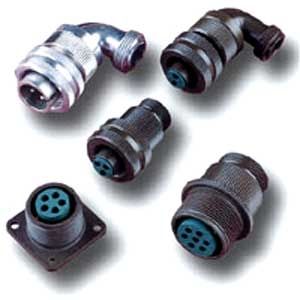If you work in Electrical / Electronic manufacturing you will at some point come in contact with Military Specification (Mil Spec) Connectors and, like many people, you probably find the wide variety of specifications and options confusing.
Don’t worry you’re not alone, many people who have not had the specific training find mil spec connectors totally baffling. Firstly, there is the specification type; the most common are 38999, 26482 & 5015, being the most widely-used, although there are many more.
There is, however, some good news for those who want to understand a little more without going all out technical overload.
Once you understand the basic principles involved then the rest falls into place, so let’s take a look at the main things you need to know.
Mating Type:
The Mil Spec stipulates the mating interface, in the main there are two basic types:
Bayonet:

Screw Coupling:

Once you know the type of locking required you then need to look at the contact layout. This is indicated in the part number by the use of a set of numbers, for example 20-15; in other words, the way the contacts are positioned in the connector. Most mil spec connectors assign pins by the use of letters rather than numbers. Take a look at the following example:

Now that you can work out how the connector mates and spot the contact layout configurations you are almost there. The final part is the Backshell, which has various configurations such as the Cable Clamp, Heatshrink Adapter and Gland Adapter:



Although this is a simple guide I hope that it has been helpful in de-mystifying the connectors and how to understand the basics. The next time you are looking at a details connector specification you should start to understand the information and feel more confident about using the information you have.
As with all things important, if it is ‘mission critical’ then I recommend you speak to the experts first as we are here to help and, most importantly, we will make sure the most appropriate connectors are specified for the purpose for which they are being used.

A Simple Guide to Mil Spec Connectors
If you work in Electrical / Electronic manufacturing you will at some point come in contact with Military Specification (Mil Spec) Connectors and, like many people, you probably find the wide variety of specifications and options confusing.
Don’t worry you’re not alone, many people who have not had the specific training find mil spec connectors totally baffling. Firstly, there is the specification type; the most common are 38999, 26482 & 5015, being the most widely-used, although there are many more.
There is, however, some good news for those who want to understand a little more without going all out technical overload.
Once you understand the basic principles involved then the rest falls into place, so let’s take a look at the main things you need to know.
Mating Type:
The Mil Spec stipulates the mating interface, in the main there are two basic types:
Bayonet:
Screw Coupling:
Once you know the type of locking required you then need to look at the contact layout. This is indicated in the part number by the use of a set of numbers, for example 20-15; in other words, the way the contacts are positioned in the connector. Most mil spec connectors assign pins by the use of letters rather than numbers. Take a look at the following example:
Now that you can work out how the connector mates and spot the contact layout configurations you are almost there. The final part is the Backshell, which has various configurations such as the Cable Clamp, Heatshrink Adapter and Gland Adapter:
Although this is a simple guide I hope that it has been helpful in de-mystifying the connectors and how to understand the basics. The next time you are looking at a details connector specification you should start to understand the information and feel more confident about using the information you have.
As with all things important, if it is ‘mission critical’ then I recommend you speak to the experts first as we are here to help and, most importantly, we will make sure the most appropriate connectors are specified for the purpose for which they are being used.
Nicab blog
Take a look at some of our other posts